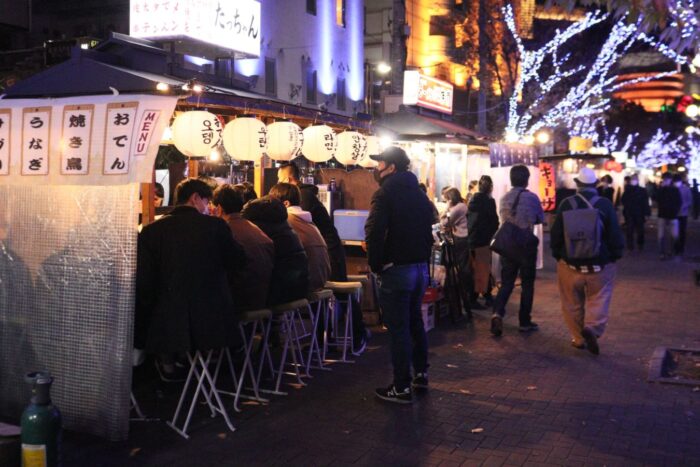Yasuke (弥助) was a man of African origin who served as a retainer and weapon-bearer to the Japanese daimyō Oda Nobunaga during Japan’s Sengoku period. He was a unique figure in Japanese history as the first foreign-born man to achieve the status of a samurai warrior. Yasuke’s story has fascinated people for centuries, with many books, movies, and TV shows being made about him.
Yasuke’s origins are shrouded in mystery. It is believed that he was born in Mozambique in southeast Africa, and was brought to India as a slave. There, he caught the attention of the Italian Jesuit missionary Alessandro Valignano, who brought him to Japan in 1579 as part of his entourage. Yasuke’s physical appearance and foreignness made him a curiosity to the Japanese, and he quickly caught the eye of Oda Nobunaga, who was impressed by his strength and intelligence.
Yasuke’s life in Japan was marked by both triumph and tragedy. He quickly rose through the ranks to become a trusted advisor to Oda Nobunaga, and was respected by his fellow samurai for his martial prowess. However, he also faced discrimination and prejudice due to his skin color and foreignness. Despite this, Yasuke remained loyal to Oda Nobunaga until the end, and his story has become a symbol of perseverance and bravery in the face of adversity.
Early Life
Yasuke’s early life is shrouded in mystery, and not much is known about his origins. Historians have speculated that he was born in Mozambique, Ethiopia, or Nigeria, but his exact birthplace remains unknown.
It is believed that Yasuke was brought to Japan by Jesuit missionaries in 1579. At the time, he was around 24 to 26 years old and stood at an impressive height of 6 feet 2 inches (1.88 meters), which was significantly taller than the average Japanese person at the time.
Upon his arrival in Japan, Yasuke quickly caught the attention of Oda Nobunaga, a powerful daimyo who was impressed by his size and strength. Nobunaga invited Yasuke to become his personal bodyguard and gave him the rank of samurai, which was a rare honor for a foreigner.
Despite his status as a samurai, Yasuke faced discrimination and prejudice from some of Nobunaga’s retainers, who were uncomfortable with the idea of a black man serving a Japanese lord. However, Nobunaga valued Yasuke’s loyalty and bravery, and he remained in his service until the daimyo’s death in 1582.
Service to Nobunaga

Upon arriving in Japan in 1579, Yasuke was in the service of the Italian Jesuit missionary Alessandro Valignano, Visitor of Missions in the Indies, in India. He was brought to Japan as a slave and presented to Oda Nobunaga, a powerful daimyō in Japan. Nobunaga was fascinated by Yasuke’s appearance and immediately took him into his service as a retainer and weapon-bearer.
As a samurai, Yasuke would have fought in several battles for Nobunaga, though the exact number is unknown. He quickly gained Nobunaga’s trust and became an important member of his retinue. Yasuke was present at Honnō Temple in Kyōto in 1582 when Nobunaga was betrayed by his general Akechi Mitsuhide.
Despite his short service to Nobunaga, Yasuke’s legacy as the first black samurai in Japan has continued to fascinate people around the world. His story has been the subject of numerous books, movies, and TV shows, and he remains an important figure in Japanese history.
Life after Nobunaga
After the death of Oda Nobunaga, Yasuke joined Oda Nobutada, the son of Nobunaga, who was nearby. According to historians, Yasuke fought on Nobutada’s side in the Battle of Tenmokuzan, which took place in June 1582. However, Nobutada and his forces were defeated by Toyotomi Hideyoshi’s army, and Nobutada was forced to commit seppuku.
After the battle, Yasuke was captured by Hideyoshi’s forces, but he was not executed. Instead, he was reportedly taken into Hideyoshi’s service as a valet. However, there is little information about Yasuke’s life after this point.
Some accounts suggest that Yasuke may have traveled with Hideyoshi to Korea during the Japanese invasions of Korea in the late 16th century. However, this is not confirmed, and it is unclear what happened to Yasuke after this time.
Legacy
Yasuke’s legacy is one of a trailblazer, a man who broke barriers and defied the odds. He is remembered as the first African to become a samurai, a remarkable achievement in a society that was highly stratified and hierarchical. His story has inspired many, and he has become a symbol of hope and perseverance.
Yasuke’s legend has been passed down through the generations, and his story has been retold in various forms, including books, anime, and movies. His legacy has also been celebrated in Japan through various festivals, such as the Yasuke Matsuri, which is held annually in his honor.
Yasuke’s story has also sparked conversations about race and identity in Japan. Some have hailed him as a symbol of diversity and inclusion, while others have criticized his portrayal as a novelty or a token. Nevertheless, Yasuke’s legacy has opened up new avenues for discussion and reflection on the role of race and ethnicity in Japanese society.
Today, Yasuke remains an important figure in Japanese history and culture. His story continues to inspire and captivate people around the world, and his legacy will undoubtedly endure for generations to come.




